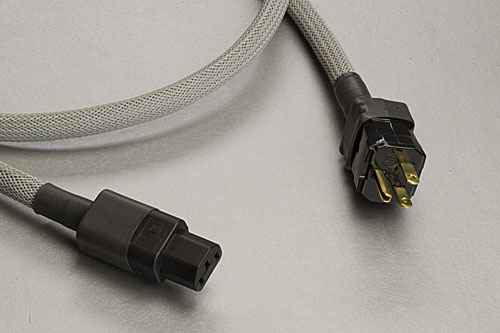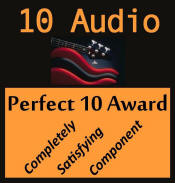Straight Wire is one of the oldest and most respected manufacturers of audio cables. Started in the mid-1980s by Steven Hill, Straight Wire introduced to the audio community a number of innovative “firsts” in cable design: first impedance tunable flat speaker cable, first to use micro-fiber, one of the first to use silver lead-free solder – over 15 years before ROHS, first to introduce CCT (Compressed Conductor Technology) offering the advantages of solid core and stranded cable designs, first to utilize Dual-Dielectric technology, and the first to use suspended air space insulation, among other innovations.
The Straight Wire Web site is a useful tool to use to help choose the correct cables. There is information on the reasons for upgrading your cables, how to choose which cable might offer the greatest improvements in your system, and a wealth of technical information about cable design and observable effects. There are also very good descriptions of many different materials used in production cables by Straight Wire and by other manufacturers, including how these materials actually sound. Please use the link at the bottom of this page.

The Straight Wire Pro Thunder Power Cable is the best power cable made by Straight Wire, their top of the line. According to the applicability chart, it “is the reference level for unsurpassed musical satisfaction. Designed and produced for those seeking maximum performance from their select audio components.” Pro Thunder is composed of 9 gauge stranded oxygen free copper which are “shielded low resistance twisted helical pairs and premium materials that minimize electromagnetic effects, noise and maintain dynamics”. It uses PFA & PP insulation with a very manageable diameter of 11 mm. The cable is mildly stiff, but easily formed and installed.
The review system includes a VPI Aries 3 turntable with a Tri-Planar VII SE tonearm, ZYX UNIverse Premium and Miyajima Madake moving coil cartridges; Pass Labs XP-25 phono preamplifier; custom Windows 7 music computer running JRiver Media Center 22; Cary DAC-200ts , Bryston DAC-3, and Mytek Brooklyn DACs, the latter with external power supply; Lynx Hilo AD/DA converter with external power supply; Mark Levinson No. 52 and Acoustic Imagery Jay-Sho preamplifiers; Rogue Audio Stereo 100, Cary CAD-805AE, Inspire Fire-Bottle SE, Bryston 2.5B3, and Pass Labs XA30.8 power amplifiers; Fritzspeakers Carrera BE with the lowest few Hertz supplied by a pair of JL Audio e110 subwoofers, and Focal Chorus 714 loudspeakers borrowed from the HT system. The audio cabling is Audioquest WEL Signature and Mogami interconnects and speaker cables. USB cables include Wyred4Sound USB PCOCC Premium and Lavricables “dual head” cable. Power cables include my DIY power cord, Shunyata Anaconda CX, and Acoustic Zen Absolute. Power protection and purification are provided by a PS Audio Dectet for the preamplifiers and source components, and a PS Audio Quintet for the power amplifiers. The latter provides remote turn-on and -off of power amplifiers that lack a 12V remote trigger.
Reviewing power cables (power cords) creates some apprehension due to the need to repeatedly turn off and turn on (power down and restart) various components. Some components can have their power cords replaced very quickly and be back in operation in just a few seconds. Others, such as the music computer and vacuum tube power amplifiers, require more lengthy procedures. Luckily and happily, even with the multiple power cycles which each component endured, there were no failures of any kind. All of the system components restarted with no apparent harm.
Power cables usually have very similar effects on most of the gear with which they are used. If a power cable seems to make the bass more prominent when used with a phono preamplifier, then very often that same power cable will have the same effect in the apparent bass range of a power amplifier. As such, I don’t find much investment in the idea that a power cable that works very well for a digital component will not work well for an analog component, for example, and that you need a “digital” power cable for a digital component and an “analog” power cable for analog gear. As long as the cable is properly designed using good materials, it should sound equally good on all gear, as long as the current capability (wire gauge) is appropriate. A good power cable should, by definition, work well for any and all gear. If a component sounds bad with a known good power cable, you should replace the component. However, just as with anything in high end audio, everything makes a difference.
And that exactly defines the observed results from Straight Wire Pro Thunder power cord. It delivers very similar results with all manner of components, and it maintained its relative performance compared to the other power cables throughout the audition. So what does Pro Thunder seem to do and do better than the other power cables on hand? In a word: FOCUS.
This character is simple to explain to those of you who wear eyeglasses. You have experienced the feeling you get when you need a new prescription. Objects have been getting steadily fuzzier as time goes on and are not as sharp and clear as when you first put on that pair of glasses. The longer you wait before replacing that pair, the less in focus the world around you becomes. So you eventually get an eye test, and a new prescription, and new lenses. Instantly, everything you look at is beautiful again.
This is the essential gift that your audio system receives upon installation of one or more Pro Thunder power cables. In my system, I installed one 2 meter Pro Thunder cable, $1,100, between the wall outlet (20 Amp dedicated circuit feeding PS Audio Power Port receptacles) and the PS Audio Quintet power center; and one 1 meter Pro Thunder, $700, feeding the Dectet power center. With each installation of these power cables, greater image focus was instantly apparent.
You would be correct in applying this idea of increased focus to the sound stage as a whole, but the effect does not end there. Each performer instantly gains definition and individuality with greater separation from adjacent artists. The instruments are more precisely located in all 3 dimensions: laterally, vertically, and their relative distance (depth). The stage itself becomes better defined regarding overall size, and the volume of the performance space – from studio to large concert hall – is easier to discern.
The downside to all this exactness is that the total volume of the performance space can seem a bit smaller than when using a power cable that offers a less precise, more spread out and vague venue. This trade-off was a bit worrisome at first, but that concern was very quickly replaced with a much greater appreciation for the actual, correct presentation offered by the Pro Thunder cables. This is similar to dialing in the proper vertical tracking angle on a phono cartridge. You know the VTA is correct when the center image locks in.
The Shunyata Anaconda CX cord (discontinued, but the list price was $2,000), with its complex interwoven conductors, presented the largest physical recording space with the least distinct performers. A possible reason, just a guess really, for why this happens is that the more complex the cable, the more minute phase anomalies are created which distorts the performance space. If you think about the way a power supply diode works, switching off and on depending on the exact phase position of the incoming AC waveform, this might make sense, at least without empirical observations to support the proposition.
The Pro Thunder’s outstanding image focus extends to the sounds of all instruments, from standing bass, to organ, to all brass instruments and their enormously complex harmonic environment, and to all vocals. Each sound is tighter, “faster” with less blurring, more easily identified and appreciated. In the bass range, the Cary CAD-805AE tube amplifiers could easily have been mistaken for über expensive solid state amps. The gain in impact and definition in the bass is eye-opening, at least with these amplifiers. At the other frequency extreme, the upper treble displayed a very small reduction in grain and harshness, even on poorer recordings. The high treble extension, even into near dog-whistle territory, is unchanged.
These small improvements are certainly worthwhile and appreciated, but pale in value compared to what the Pro Thunder cables bring to the human voice. Singers become more solid and substantial, their voices coming from a larger “instrument” that includes more of the size of their bodies and not as just a point in space. As each sound is clearer, there are gains in the richness and overtones of each singer. They become more real and believable. It is reasonable to assume that adding more Pro Thunder cables to the system, connecting each power center to the individual components, would offer further improvements.
Visiting the Straight Wire room at the 2016 Rocky Mountain Audio Fest was auspicious. Jerry Willsie, the Director of Sales, was there and we talked about his cables and the possibility of a review. This discussion eventually led to this review of a superior product and an important upgrade to my reference system as I purchased the review samples. The Pro Thunder power cable is a great product that provides a noticeable and very cost effective system upgrade which has increased my enjoyment of and connection to the music.
Overall Rating: 10 LPs

Link to manufacturer: Straight Wire
